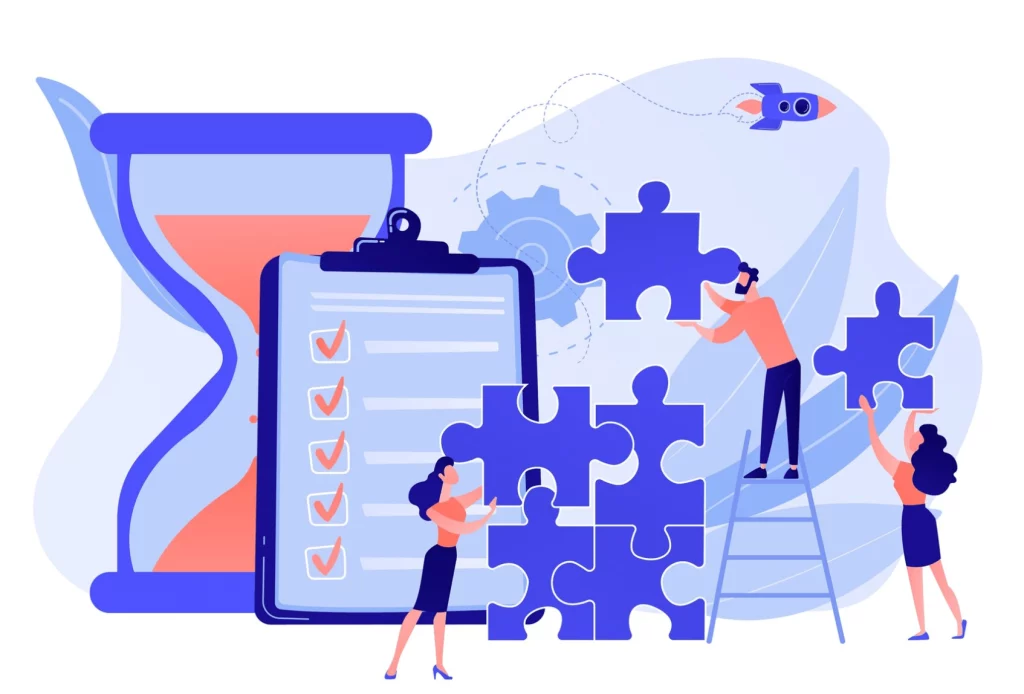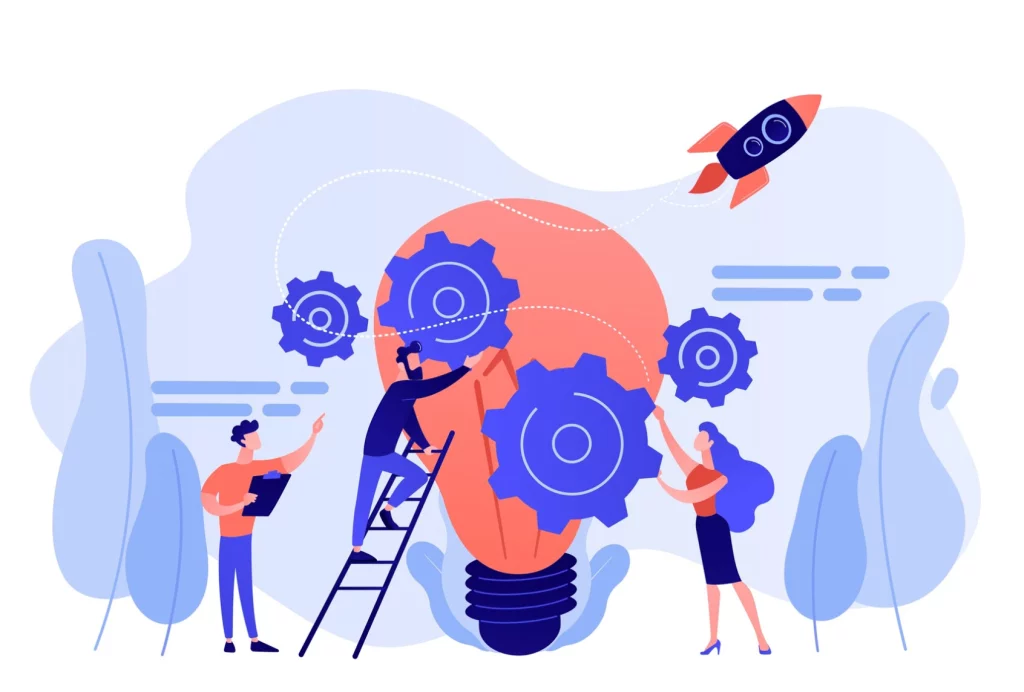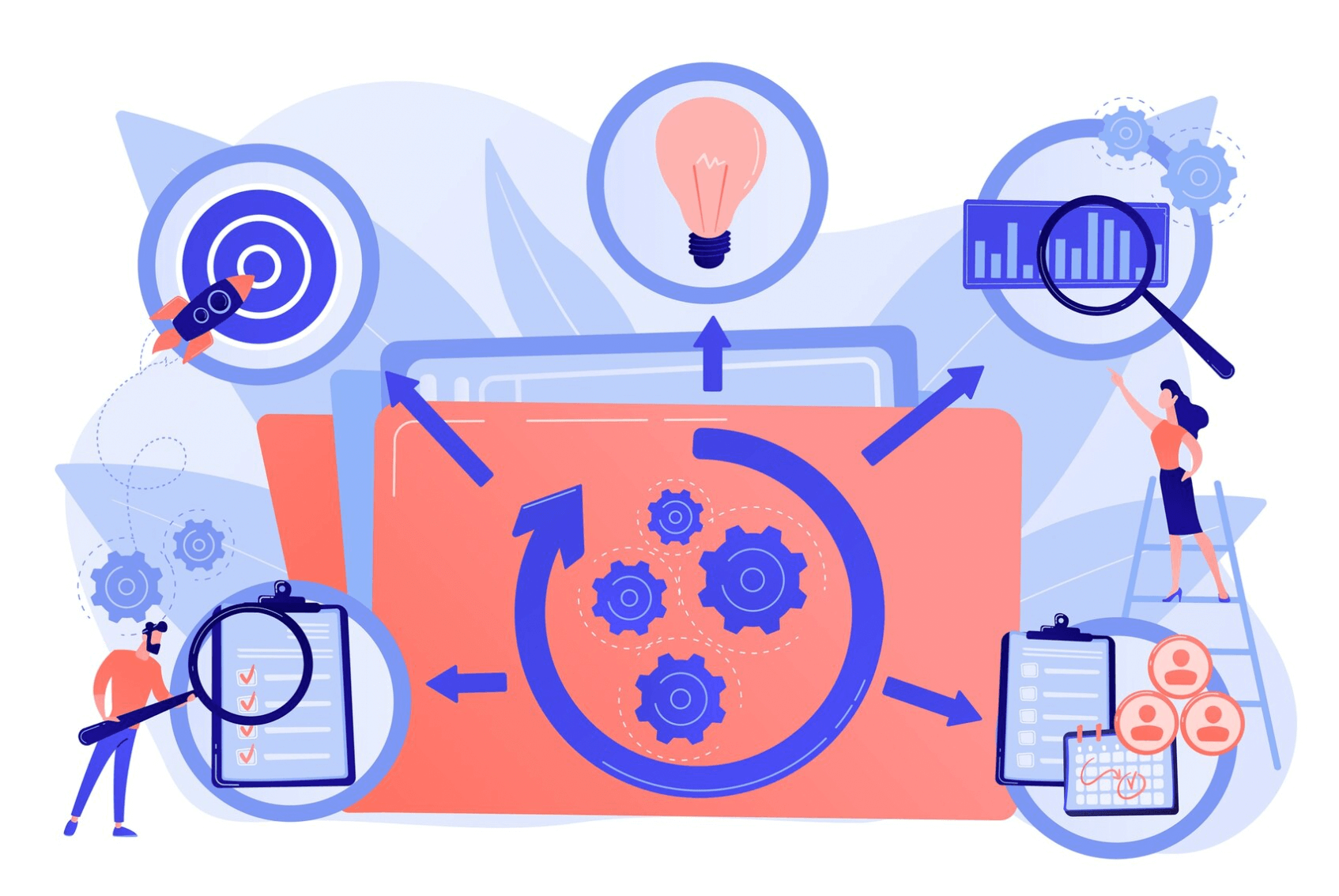A company needs objectives to thrive. However, it must ensure that these objectives are achieved to expect good performance. And that’s where commercial efficiency comes in to judge. Why measure it? How to improve it? We provide you with all our advice to help you achieve good results!
- What is commercial efficiency?
- What are the 4 indicators of commercial performance measurement?
- Improving operational efficiency: our 12 tips
- Mistakes to avoid
What is commercial efficiency?
Definition
Commercial efficiency is defined as the ability of a company, service, or individual to accomplish objectives and achieve desired results. This concept encompasses various aspects such as:
- Costs,
- Timelines,
- Quality,
- Profitability.
It is evaluated using key performance indicators, whether qualitative, quantitative, or both.
Why is it necessary to measure it?
Measuring commercial efficiency is necessary for several reasons, which are essential for the health and growth of a business:
- Identification of real performances: Measuring commercial efficiency allows understanding how the company actually performs in the market. This includes sales performance, customer satisfaction, market share, etc.
- Informed decision-making: Accurate measurements provide reliable data on which to base strategic decisions. This helps in choosing the right market strategies, allocating resources effectively, and planning for the future.
- Identification of opportunities and challenges: Analyzing commercial performance helps identify growth opportunities and areas needing improvement. This helps focus on the most profitable market segments and solve problems hindering sales or customer satisfaction.
- Evaluation of strategies and campaigns: Measuring efficiency allows assessing whether current sales and marketing strategies are working. This helps understand which channels, tactics, or messages are most effective.
- Management of sales team performance: This allows evaluating the performance of sales teams, determining training needs, and motivating staff with clear goals and performance-based incentives.
- Alignment with company goals: Measuring commercial efficiency helps align sales and marketing efforts with the company’s overall goals, ensuring that all activities contribute to the long-term vision.
- Continuous improvement: Regular evaluation of commercial efficiency allows for continuous improvement. By identifying what works and what doesn’t, businesses can iteratively refine their strategies for better results.
- Market responsiveness: In a dynamic business environment, measuring efficiency allows companies to remain responsive and adapt quickly to market changes, consumer trends, and competitive actions.
- Justification of investments: By measuring efficiency, companies can justify investments in certain business initiatives. This is necessary to gain support from stakeholders and to allocate financial resources wisely.
- Investor and stakeholder confidence: Reliable and transparent efficiency measures can strengthen investor, shareholder, and other stakeholder confidence by demonstrating that the company is competently managed and results-oriented.

What are the 4 indicators of commercial performance measurement?
There is no fixed list of 4 indicators of commercial performance measurement, as it depends on the specific objectives and context of each business. However, here are 4 common examples of commercial performance indicators that many companies use:
- Revenue (sales): Measures the total amount of sales made over a given period. It is a fundamental financial indicator for evaluating commercial performance.
- Conversion rate: Represents the percentage of prospects or website visitors who take a desired action, such as a purchase. It measures the effectiveness of conversion efforts.
- Average basket (average order value): Indicates the average value of purchases made by a customer in a transaction. A high average basket can be a sign of increasing sales or a successful upselling strategy.
- Customer satisfaction rate: Evaluates overall customer satisfaction with products, services, or buying experiences. A satisfied customer is more likely to remain loyal and recommend the company.
Improving operational efficiency: our 12 tips
#1 – Effective commercial strategy
Develop a strategy that focuses on the unique benefits of your products or services. Ensure that this strategy directly addresses your customers’ problems and aligns with their goals.
#2 – Prioritization of actions
Use the Eisenhower matrix to identify urgent and important tasks. This allows you to focus your efforts where they are most needed and improve time management.
#3 – Use of specialized tools
Integrate specialized sales and marketing tools to improve the efficiency of your commercial processes. These tools may include CRM for customer relationship management, marketing automation tools, data analysis software, etc. They allow you to track performance, automate repetitive tasks, and gain a better understanding of customer needs and behaviors.
Improve the performance of your sales team with the CRM 100% dedicated to retail. With Nomadia Sales, your sales force effectively prepares their customer visits and makes a difference in the field!
#4 – Competitive positioning
Analyze the strategies and offerings of your competitors. This will help you understand your position in the market and identify areas where you can stand out.
#5 – Attracting visitors online
Create engaging and relevant content for your website and social media channels. This will increase your online visibility and attract potential customers.
#6 – Optimization of the conversion funnel
Identify and engage with your target audience at each stage of the conversion funnel. This maximizes the chances of turning prospects into customers.
#7 – Use of Google Analytics
Analyze Google Analytics data to understand user behavior on your site. Use this information to refine your digital marketing strategies.
#8 – Task prioritization according to prospect needs
Adapt your content and interactions based on the progress of your prospects through the sales funnel.
#9 – Mastering the customer lifecycle
Understand the various stages a customer goes through, from awareness to purchase decision, to better target your sales efforts.
#10 – Customer retention
Implement strategies to retain customers, such as sending personalized newsletters or special offers.
#11 – Performance indicators
Track key indicators to assess the effectiveness of your sales strategies. This will help you identify areas for improvement.
#12 – Constant innovation
Stay up to date with the latest trends and technologies to continually improve your products, services, and commercial processes.

Common mistakes to avoid
There are several common mistakes to avoid regarding commercial performance. Here are some of them:
- Lack of clear strategy: Failure to define a clear commercial strategy can lead to inconsistent and ineffective actions. It is essential to have a well-defined roadmap.
- Poor market knowledge: Ignoring market developments, trends, and customer needs can lead to inappropriate decisions and poorly adapted products or services.
- Ineffective communication: Failing to communicate clearly and consistently with customers can result in missed business opportunities. It is essential to understand customer needs and adjust communication accordingly.
- Lack of training and development: Ignoring ongoing training for the sales team can affect its competence and motivation. Well-trained staff is necessary to achieve performance goals.
- Inadequate customer relationship management: Ignoring customer satisfaction and not promptly addressing problems can lead to loss of trust and loyalty. Effective customer relationship management is essential.
- Failure to track performance: Not regularly measuring performance indicators can prevent the rapid identification of problems. Regular monitoring is necessary to adjust strategies and tactics as needed.
- Inappropriate pricing policy: Setting prices too high or too low relative to perceived value can negatively impact commercial performance. A pricing policy must be aligned with the overall strategy of the company.
- Excessive focus on competition: While it is important to monitor competition, excessive obsession can divert attention from real customer needs and internal improvement opportunities.
Commercial efficiency plays a very important role for your business. Make sure to pay enough attention to it through our advice and stay vigilant against common mistakes.
Nomadia helps you adapt your objectives to the reality of the field, better manage your activities, and optimize your visits.

